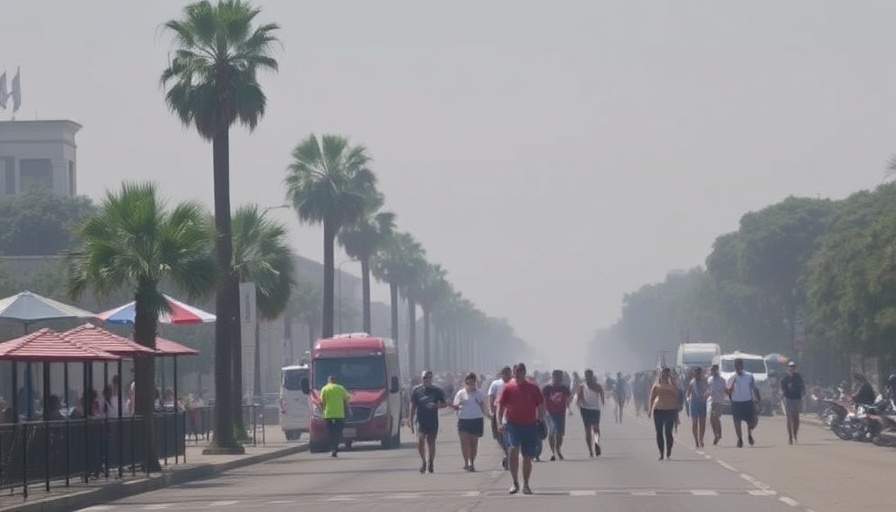
Understanding the Recent US Heatwave
Last week, cities across the United States experienced one of the most brutal heatwaves in recent history, with temperatures reaching alarming levels. Places like New York City and Washington D.C. recorded some of the highest temperatures for this time of year, leading to a series of distressing incidents. From fainting high-schoolers at a concert in New Jersey to Amtrak passengers trapped in a non-air-conditioned train, the heat proved dangerously debilitating. Agriculture officials in Georgia even advised residents to provide their animals with ample water and shade, emphasizing the severe impact of rising temperatures.
Heatwaves: A Sign of the Times?
With nearly 130 million people subject to heat advisories, the scorching conditions observed were more than just an uncomfortable inconvenience; they are a foreboding indication of what may become the new norm as climate change progresses. Data from the National Oceanic and Atmospheric Administration (NOAA) revealed that 282 locations broke daily heat records, and this record-setting heat is linked to a rapidly warming Arctic, which has led to more frequent and prolonged heat domes.
Climate Change: An Inconvenient Truth
According to recent findings published in the Proceedings of the National Academy of Sciences, stalled atmospheric patterns caused by climate change—a phenomenon predicted by climate models—are becoming increasingly common. These wavier polar jet streams can lead not just to oppressive heat, but also heavy rainfall and flooding, thereby demonstrating the dual threat posed by climate change.
The Long-Term Consequences of Rising Temperatures
Experts are warning that the increasing frequency of heatwaves points to a stark reality: these dangerous conditions are not just a random occurrence. Climate Central has estimated that the extreme temperatures experienced recently are at least five times more likely due to human-caused climate change. As climate scientist Zachary Labe notes, “One of the easiest ways to see climate change’s impact is in how it’s increasing the chance these types of heatwaves will occur.” This acceleration poses significant risks not only to human health but also to infrastructure and economies.
What This Means for Property Buyers
For homebuyers and property investors, these shifting climate patterns pose a vital consideration. Understanding how heatwaves may affect property values, community resilience, and long-term livability is crucial. Areas frequently affected by extreme heat may experience shifts in demand as buyers prioritize homes with cooling systems, sustainable building materials, and eco-friendly features that mitigate climate impacts.
How to Prepare for a Warming World
In light of these developments, homeowners and potential buyers are encouraged to prioritize energy-efficient systems, such as modern air conditioning units using sustainable materials. Additionally, incorporating rain gardens and green roofs can help regulate temperature and promote sustainable practices. By embracing eco-friendly design, homeowners can enhance their living environments while aiding in climate change mitigation.
Take Action Now
As we move forward into a potentially scorching summer and beyond, the importance of sustainable living becomes ever clear. Whether you are looking to buy or improve your current home, consider making eco-friendly renovations and design choices that not only enhance your property’s value but support a healthier planet.
 Add Row
Add Row  Add
Add 





Write A Comment